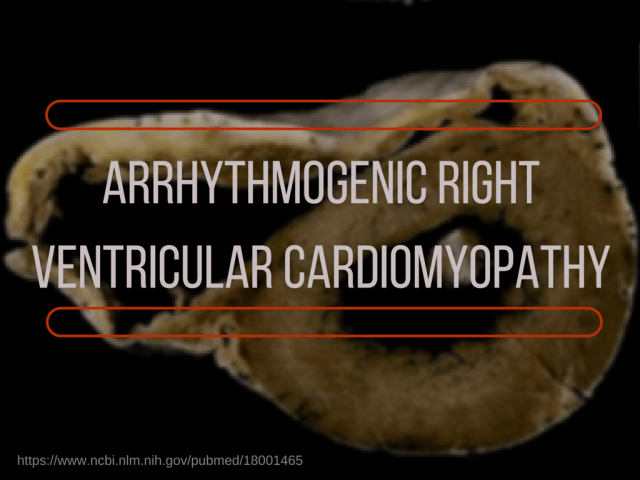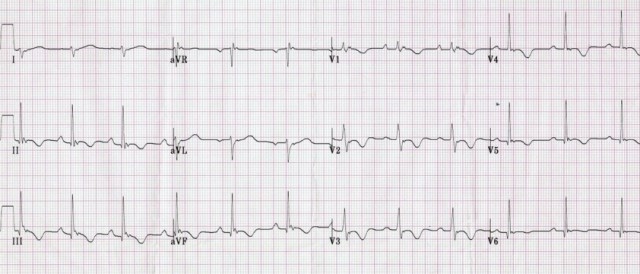
File this under “uncommon but important”. Like a lot of things in Emergency Medicine really… The main paper for this is linked in the references below
[peekaboo_link name=”Epidemiology”]Epidemiology[/peekaboo_link]
[peekaboo_content name=”Epidemiology”]
- it’s rare, though to be honest we don’t know how rare. In Italy it seems to be a big thing and reported as commonest cause of sudden death in Italian athletes.
- diagnosed most in young men before age of 40
[/peekaboo_content]
[peekaboo_link name=”Cause”]Cause[/peekaboo_link]
[peekaboo_content name=”Cause”]
- well we’re not quite sure. Lots suggested but these are the main contenders
- Genetic, in lots of different ways
- infectious/inflammatory – perhaps post myocarditis
[/peekaboo_content]
[peekaboo_link name=”Clinical Presentation”]Clinical Presentation[/peekaboo_link]
[peekaboo_content name=”Clinical Presentation”]
- arrhythmia: VT, often in an LBBB pattern
- sudden death: annual mortality estimated at 3% with no treatment and 1% with
- heart failure: usually in older people – yet another cause to add to your list of heart failure. The one stand out point is that you get a dilated thin walled RV without high PA pressures. There aren’t many things that do that.
[/peekaboo_content]
[peekaboo_link name=”Diagnosis”]Diagnosis[/peekaboo_link]
[peekaboo_content name=”Diagnosis”]
- a lot of this will be post mortem
- you can biopsy for it
- more usefully there is a clinical criteria where you score points for different features and we all know what points mean: points mean a diagnosis of ARVC…
From an ED point of view we need to think of this in:
- syncope
- arrhythmia (primarily nasty ones)
- cardiac arrest
Myocyte biopsies and scoring systems aren’t much use here. The ECG is our only really practical test here and it’s not wonderful. That being said there is a relatively specific sign known as the Epsilon wave.

Most of the other ECG findings are very non specific.
[/peekaboo_content]
[peekaboo_link name=”Management”]Management[/peekaboo_link]
[peekaboo_content name=”Management”]
- beta blockers
- ICD
Neither of these options are likely to be that relevant to us in the ED. The more interesting situation for us might be the young cardiac arrest patient presenting in electrical storm where ARVC may be on your differential. The paper gives no specific advice on this but it’s worth seeing the post on electrical storm and accompanying paper on advice for that. There’s also the publication of Hennepin’s experience with esmolol infusions during arrest that I’ve also used. The stellate ganglion block sounds fascination but I haven’t had the opportunity for that one yet.
[/peekaboo_content]
[peekaboo_link name=”References”]References[/peekaboo_link]
[peekaboo_content name=”References”]
Gemayel C, Pelliccia A, Thompson PD. Arrhythmogenic right ventricular cardiomyopathy. JAC. 2001 Dec;38(7):1773–81. PubMed [Free full text]
- Marcus FI, McKenna WJ, Sherrill D, Basso C, Bauce B, Bluemke DA, et al. Diagnosis of Arrhythmogenic Right Ventricular Cardiomyopathy/Dysplasia: Proposed Modification of the Task Force Criteria. Circulation. 2010 Apr 5;121(13):1533–41. PubMed [Free full text]
Electrical storm papers:
Eifling M, Razavi M, Massumi A. The evaluation and management of electrical storm. Tex Heart Inst J. 2011;38(2):111–21. PubMed [Free full text]
Nademanee K, Taylor R, Bailey WE, Rieders DE, Kosar EM. Treating Electrical Storm: Sympathetic Blockade Versus Advanced Cardiac Life Support-Guided Therapy. Circulation. 2000 Aug 15;102(7):742–7. PubMed [Free full text]
Original inspiration/source for this
Other FOAMed resources
- LITFL
- Resus Review – stellate Ganglion
- Resus Review – ARVD
[/peekaboo_content]

Pingback: LITFL Review #205 | LITFL: Life in the Fast Lane Medical Blog